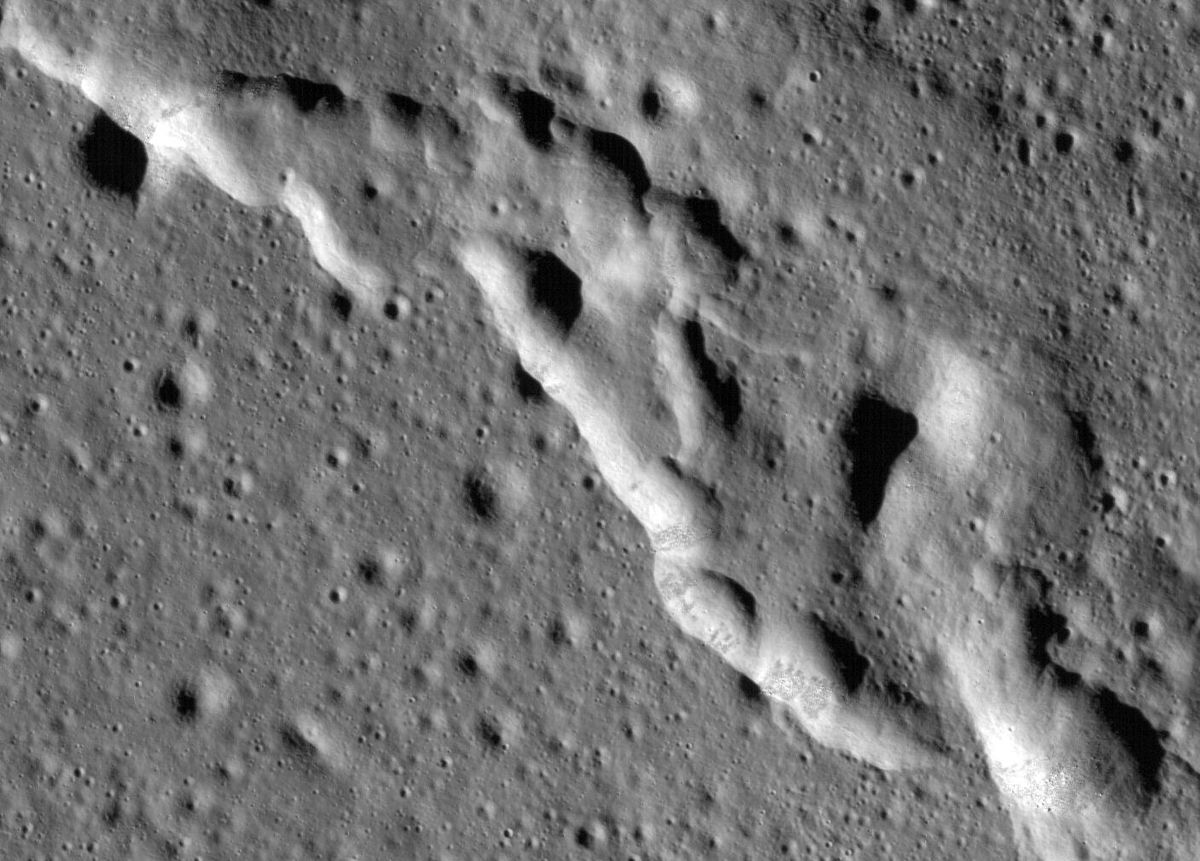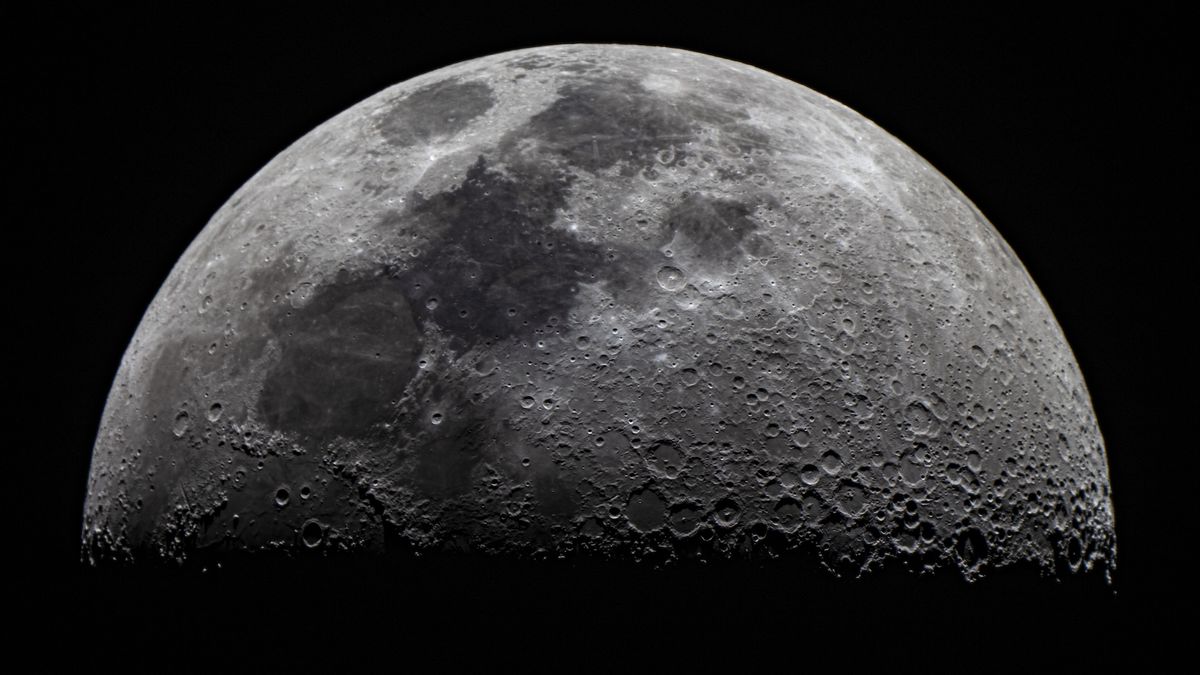The moon may still be geologically active, judging from the way the lunar far side is wrinkling as the moon contracts. At least, that’s what planetary scientists who have discovered 266 lunar “wrinkle ridges,” say, as all of these ridges appear to have formed during the past 160 million years in the rare volcanic plains on the lunar far side.
“Knowing that the moon is still geologically dynamic has very real implications for where we’re going to put our astronauts, equipment and infrastructure on the moon,” said one of those scientists, Jaclyn Clark of the University of Maryland, in a statement.
Wrinkle ridges are a well-studied phenomenon on the lunar near side — the face of the moon that we can see hanging in the sky. The near side is characterized by the famous “Man in the Moon” — a pattern created by large dark patches called lunar maria. The maria are vast, solidified lava plains that formed between 3.2 billion and 3.6 billion years ago from volcanic activity. As the moon’s interior cooled, that volcanic activity dried up, and the moon began to contract. This led to the lunar mare basalt — dark volcanic rock — wrinkling like the skin of a shriveling old apple.
Related: Artemis Program: NASA’s plan to send humans back to the moon
The near side wrinkle ridges are huge, stretching from tens to hundreds of miles long and standing hundreds of yards tall, a testament to the titanic geological stresses that formed them.
Yet, whereas 31% of the surface of the near side is covered in maria, lava plains are found only on 1% of the farside. Planetary geologists are not sure why this is the case. One theory is that a dwarf planet more than 435 miles (700 kilometers) across and loaded with radioactive isotopes struck the nearside long ago, ejecting large amounts of debris that eventually settled onto the far side of the moon, thickening the crust there and making it more difficult for volcanism to burst through to the surface. Meanwhile, the radioactive isotopes were deposited on the near side, where the heat they produced from radioactive decay melted the rock, facilitating more volcanism on the side of the moon that faces Earth.

The result is that the far side has very few maria, and so doesn’t have the long wrinkle ridges that the near side has. However, using images from the Narrow Angle Camera on NASA‘s Lunar Reconnaissance Orbiter, Clark, and fellow researchers Cole Nypaver and Thomas Watters from the Smithsonian Institution in Washington, DC, have identified 266 wrinkle ridges in far side maria.
These far side ridges are all smaller than their near side counterparts, about 328 feet (100 meters) wide and about 3,280 feet (1,000 meters) long. They appear in groups of between 10 and 40 in the far side maria, which are also much smaller than their nearside equivalents. But it’s their age that’s the interesting thing — although it is assumed that the far side maria formed at the same time as the near side maria, the farside wrinkles seem much younger.

However, you can’t just ask features on the moon for their age; geologists have to employ clever detective work to get those answers. Planetary scientists count craters, for instance, the logic being that older features will be covered in more craters than younger features will, while younger features will overlie or cut across more pre-existing craters than older features do. According to crater counts, the far side wrinkle ridges are between 84 million and 160 million years old. That means that volcanism on the far side must also be relatively recent, certainly in the past billion years, otherwise the wrinkle ridges would have formed much earlier.
“Many scientists believe that most of the moon’s geological movements happened two-and-a-half, maybe three billion years ago,” said Clark. “But we’re seeing that these tectonic landforms have been recently active in the last billion years and may still be active today.”
There’s supporting evidence that corroborates this startling conclusion. In 2020 the Chinese Chang’e 5 mission brought a sample of lunar material back to Earth from the vicinity of the Mons Rümker volcanic domes in Oceanus Procellarum, which is a vast near side lunar mare. Analysis of the sample found volcanic glass beads in the lunar regolith that have been dated to 123 million years ago, give or take 15 million years.
If true, then this geologically recent volcanic and tectonic activity means that the moon is still contracting as heat slowly leaks out from its interior, and that volcanism might still be happening today. The moon’s contraction could lead to the moonquakes that seismometers (placed on the lunar surface by the Apollo astronauts) have detected. If moonquakes are severe enough in some parts of the Moon, then they could pose a hazard to human activity on the lunar surface, leading to astronauts having to avoid those locations.
The findings were published on January 21 in The Planetary Science Journal.
Originally posted on Space.com.

